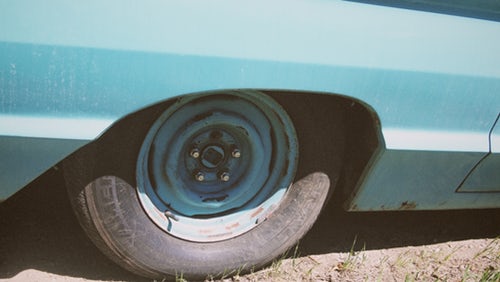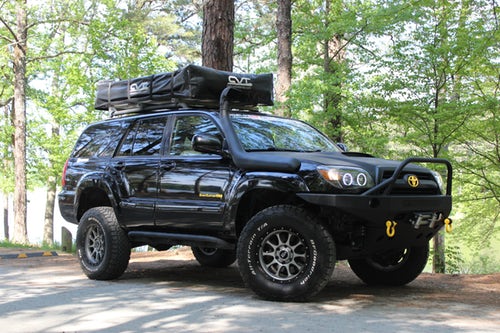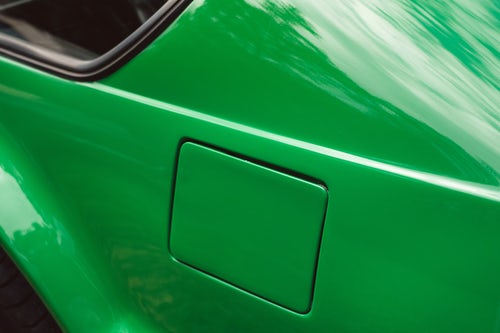SOME PEOPLE THINK the fuel consumption figure on a new car’s windscreen is an unalterable fact of life, but the simple truth is that most cars’ fuel consumption will vary considerably from the quoted figure.
Getting the best possible fuel consumption isn’t difficult, but you need to know a little about the fuel system in your car, and how to maintain it at its best. And when you do, you’ll be able to travel further for less.
The fuel system delivers fuel to your engine where it is sprayed by the fuel injectors into the combustion chamber and burnt to produce power. It may be a return system or a returnless system and will comprise a fuel tank, fuel pump to get the fuel out of the fuel tank, fuel lines to transport the fuel, a fuel rail, fuel injectors, fuel pressure regulator and returning fuel lines (a returnless system makes do without the fuel pressure regulator and return fuel lines).
The simplest way to get the best fuel consumption is to follow the manufacturer’s recommended maintenance schedules and using the fuel, oils and other disposables they recommend. You should change the oil regularly, rotate your tyres and ensure they are inflated to the correct pressure, check hoses and belts for wear and replace them before they fail, and generally keep your vehicle in a good state of repair. This applies to your fuel system, as well.
Many owners spend hours washing and polishing their cars, but fail to ensure the fuel system is as clean as the bodywork. Fuel injectors can become clogged with deposits, and unable to deliver the wide, fine spray of fuel that allows the spark to ignite it most efficiently.
You’ll see a number of telltale signs if your fuel system isn’t as clean as it should be:
- Your fuel consumption has increased for no apparent reason.
- When you push the accelerator, the engine hesitates.
- The available power is lower than you remember and the vehicle isn’t accelerating up hills as well as it used to.
One quick and easy solution is to buy a total fuel system cleaner from your local service centre, auto shop or supermarket. This will clean fuel lines and injectors, restore fuel economy, reduce the build up of deposits in the engine and lower exhaust emissions by deeply penetrating and cleaning injectors, carburettors, intake valves and combustion chambers. Best of all, it takes just a moment and works in engines old and new, petrol or diesel. Follow the instructions on the bottle – usually as simple as pouring it into a nearly empty fuel tank before you refuel. One bottle will treat 60 or 70 litres, the most common contents of a car fuel tank (larger vehicles such as SUVs may need more than one bottle).
Regular attention to fuel system maintenance is one of the simplest things you can do to improve fuel economy and reduce emissions. Untreated, those fuel deposits will build up until your fuel system becomes completely blocked, and when that happens, you’ll be stranded by the side of the road and facing some hefty repair bills.
So, your fuel system is working at its best. What else can you do to reduce fuel consumption?

Let’s start with a common cause of increased fuel consumption, even on new and well-maintained cars. Have you ever tried to push a car with a flat tyre? If you have, you’ll know just how difficult it can be. Under-inflated tyres place greater stress on the engine. Tyres will lose pressure over time, often one or two psi (pounds per square inch) each month. Older and less well-maintained tyres will lose more, and more quickly. Temperature also affects tyre pressure, causing it to fall as the temperature falls. Properly inflated tyres reduce fuel consumption and also reduce wear, possible damage and even the chance of a blowout.
Two simple steps to better fuel consumption: tyres inflated to the correct pressure and a clean fuel system.
But there’s one even more effective way to lower your fuel usage: it’s the way you drive.
Aggressive acceleration and braking are the biggest wasters of fuel. Around town you can save as much as five percent of the fuel you use by driving sensibly. On the highway, it’s even more impressive: you can cut consumption by as much as 33 percent. That’s the same as reducing the price per litre by nine cents to 58 cents (assuming fuel prices around $1.60 per litre).
Each vehicle reaches its optimum effectiveness at a different speed, but almost all vehicles will use more fuel at speeds above 80km/h, so stick to the speed limit. Fuel savings can be as high as 14 percent, just by knocking a few km/h off your cruising speed, or 12 to 24 cents per litre.

Roof racks and roof storage systems may be convenient, but they dramatically reduce the aerodynamic efficiency of your vehicle, and that means the engine has to work harder, and use more to fuel, to maintain the same speed. A large, unaerodynamic roof storage box can reduce fuel economy by as much as eight percent in town, and up to 25 percent on the open road. Take roof racks and storage boxes off your car when you don’t need them and you’ll save the equivalent of 13 to 40 cents per litre.
Take a look around your vehicle. Are there tools, boxes, and other unnecessary cargo lying about? Every additional 45 kg of weight can increase your fuel consumption by up to two per cent. Smaller vehicles will be proportionately more greatly affected than large ones. Fuel savings will be from 1.5 to 4 cents per litre.

When you’re stationary in traffic, your engine is burning fuel, as much as one or two litres per hour, depending on the size of your engine and whether the air conditioner is on. So don’t leave your engine running when you are parked. Turn it off. Restarting will use just a few seconds worth of fuel.
By anticipating traffic and road conditions, many drivers can achieve better fuel consumption when not using cruise control; others will find cruise control improves their fuel consumption by maintaining a constant speed and by changing into higher gears at the optimum time. In any case, anticipate what’s happening ahead. If traffic is stationary or you can see a red light, slow down rather than braking at the last minute. Let gravity accelerate your vehicle down hills and ease off before the crest of a hill. Be as light on the accelerator and brake as you can be without putting yourself at risk or holding up traffic and don’t allow the engine to labour (you’ll hear it struggling when you need to change to a lower gear – obviously not a problem with an automatic gearbox).
Start saving fuel and money today: it’s up to you. And it can be very rewarding.
